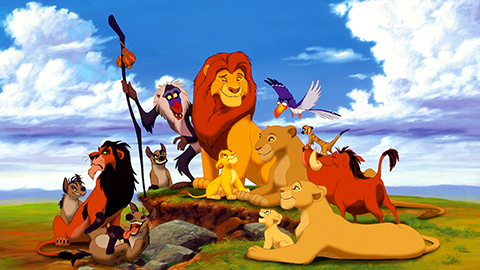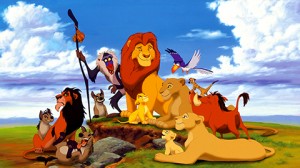In light of the current stresses of exam season, I have been contemplating my parallel educational history. Of equal, if not superior, importance to any stage of my conventional academic life, I have had a Disney education. If I visit medieval castles or forts rich in feudal history I can’t help but mentally locate Rapunzel’s tower and contemplate the prince’s access route. My Greek mythological references are entirely based upon Disney’s Hercules and any mention of Rudyard Kipling is incomplete without at least one verse of the Bare Necessities. Zoological education is no exception. Early Disney films were rather loosely based on real zoological principles – I don’t remember Snow White using any Pavlovian theory to behaviourally condition her furry friends to help with the housework. Similarly, Mary Poppins serenaded an American robin from her London home because studio executives thought the sight of a European robin would be too confusing for their target audience. However, some recent Disney tomes are more grounded in realistic ecology. Disney was my first introduction to fundamental ecological and behavioural concepts as varied as breeding coalitions, mutualistic relationships and inter-specific communication.
Responsible for introducing Swahili phrases to a generation of Timon and Pumbaa fans, the Lion King is a Disney classic, both as a film and more recently as a highly popular stage musical (which is coming to Dublin soon – even if you don’t normally like musicals you must go to this show for the most incredible stagecraft you will ever see). The film marked one of the first times that animators made a specific effort to study their animal subjects to make their movements and behaviours as realistic as possible. Prior to the release of this film, my four-year old self didn’t know that male lions, often brothers, form coalitions to take over prides or that female lions take a cooperative, crèche approach to raising their offspring. Cooperative behaviour in lions continues to spark interest and research to understand why lions are unique among big cats in exhibiting these social tendencies. Of course, some creative licence remained in Disney’s depiction of their feline heroes – the voice of Darth Vader is sadly absent from the Serengeti and male lions don’t lead a troupe of goose-stepping hyenas in a song of revolution. Similarly, rather than a “king and queen”, there’s an equal dominance status within male members of a coalition and within adult females in a pride (unfortunately socially equal characters don’t lend themselves easily to a re-telling of Hamlet). Despite the sprinkle of Disney magic however, the basic ecological premise of Simba’s pride remains grounded in fact.
My ecological horizons were further expanded by Finding Nemo’s depiction of the mutualistic relationship between clownfish and the anemones they call home. It’s a deceptively simple relationship – the anemone’s sting provides the fish with a predator-free habitat while Nemo and his friends help keep the anemone free from parasites. However, many of the finer details underlying this interaction continue to spark research interest (and I’m obviously not the only one to have experienced a parallel Disney education). Nemo has provided evidence that mutualistic interactions tend towards a nested structure. More recently, the way clownfish move their fins has been identified as helping to increase anemones’ oxygen consumption at night – although, hampered by a malformed fin, I wonder whether Nemo’s personal anemone is gasping for breath a bit more than the other anemones? Furthermore, Finding Nemo did not neglect my geographical education – I now know that to get from the Great Barrier Reef to Sydney it’s just a short ride on the East Australia Current – and if I meet a turtle on the way, just call him “Dude”, Mr Dude is his father.
Thanks to Disney, Nemo’s pal Dory is another star of every aquarium. Forgetful but lovable, Dory was my first introduction to the realms of interspecific communication. While Dory speaks whale, it appears that some whales can learn to talk back. A captive beluga whale in San Diego seems to modify its call to mimic human speech. Neither of these examples are true interspecific communication; Dory’s valiant efforts to converse were unsuccessful and the Californian beluga’s “human” vocalisations appear to be relicts of an ability to mimic other whale species. In both cases, information is not passing between fish and whale or whale and human. Though who knows, perhaps Finding Nemo 3 will be a story of the quest to discover the Rosetta Stone for interpreting whale speech…
So through the talking animals, improbable alliances (why a meerkat and warthog??) and heart-warming moral tales, look out for the ecology in your next Disney film. Combining their subliminal ecological messages with the excellent work of the Disney conservation fund hopefully many more generations will experience a Disney ecological education.
Author
Sive Finlay: sfinlay[at]
Photo credit
wikimedia commons


